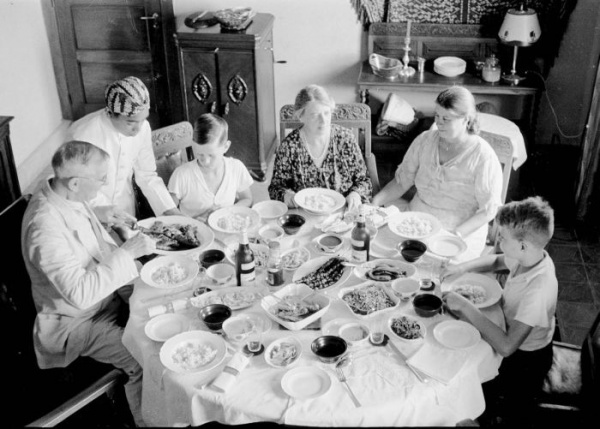Facts About Rijsttafel
"Rijsttafel" is a Dutch term that translates to "rice table." It represents an elaborate Indonesian meal adapted by the Dutch from the Nasi Padang presentation style in West Sumatra's Padang region. This meal features a variety of side dishes served in small portions alongside rice, which can be prepared in multiple ways. Typical side dishes include egg rolls, sambals, satay, fish, fruits, vegetables, pickles, and nuts. The primary goal of a Rijsttafel is to showcase a broad spectrum of flavors, colors, spiciness levels, and textures—a concept not often explored in Western cuisine.
Historically, the Rijsttafel was a colonial creation by the Dutch to highlight the rich and diverse cuisine of their Indonesian colony. It was designed as a festive banquet that represented the multi-ethnic nature of the Indonesian archipelago, incorporating dishes from various regions. Traditionally, the meal featured a central platter of rice, surrounded by an extensive array of small dishes.
After Indonesia gained independence in 1945, the Rijsttafel's popularity waned in Indonesia as part of a broader rejection of Dutch colonial influences. However, it remained popular in the Netherlands, particularly among families with colonial ties. In recent years, a renewed interest in Indonesian cuisine has led to a resurgence of Indonesian restaurants in the Netherlands.
A typical Rijsttafel might include dishes like Babi Kecap, Nasi Goreng, Rendang, Satay, Gado-Gado, and many others. While the Rijsttafel is less common in modern Indonesian dining, it remains popular in Indonesian restaurants around the world, especially in the Netherlands and South Africa.
Today, only a few places in Indonesia serve the elaborate colonial-style Rijsttafel. It is more commonly found in upscale restaurants, particularly in Jakarta. Even Garuda Indonesia, the national airline, has introduced an Indonesian Rijsttafel as part of its in-flight dining experience, offering passengers a taste of signature Indonesian dishes.

 Belgium
Belgium